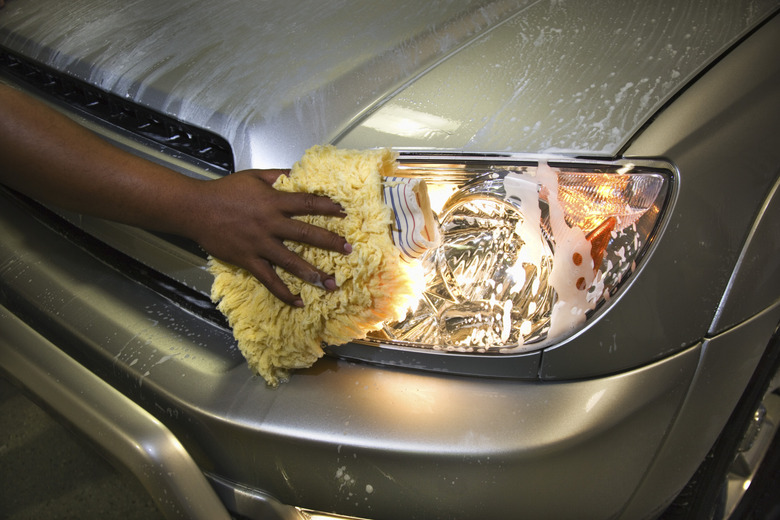How To Remove Scratches From Clear Plastic
Things Needed
-
Cotton cloth
-
Dish soap
-
Toothpaste (optional)
-
Furniture polish (optional)
-
Plastic polish, commercial grade
-
800-grit sandpaper
-
1000-grit sandpaper
-
1500-grit sandpaper
-
2000-grit sandpaper
-
Polishing compound
Tip
Keep sandpaper wet with a small spray bottle, adding water as needed to ensure the sandpaper and plastic stays wet. If the repaired area doesn't match the existing plastic — has dull or shiny spots — it may require sanding the area in its entirety.
Cotton cloth works best for all-purpose plastic cleaning and scratch removal. Avoid cloth with strands, lint or anything that might scratch.
Warning
Never use any kind of cleaner that contains ammonia. Ammonia can damage plastics. Don't use your hand to clean dust from plastics. Contaminates such as dust can scratch plastics. Blow air across the plastic or use a dampened cloth to gently remove or "float" particles off before beginning.
Lots of windows, shields, headlight lenses and guards are now made with clear plastic. The formula for many of them might be slightly different, but most of them scratch if abused. You don't have to live with the scratches, though. Elbow grease and a variety of household products can remove scratches from plastic. If the scratches are more stubborn, tougher products and techniques can remove them and bring back the shine.
Don't Sweat the Light Stuff
Step 1
Clean the area with a dampened cloth and dish soap. Run your fingernail over the scratch. If the fingernail hooks, it's a deep scratch. If not, it's a shallow scratch and you may be able to remove it with toothpaste, baking soda or furniture polish.
Step 2
Apply toothpaste to a dampened cloth. Alternatively, make a paste with baking soda and water. Rub the scratched area lightly with a circular motion. Remove the toothpaste or soda using the damp cloth. Wipe the area clean with a soft cloth.
Step 3
Apply furniture polish to the area if you're not satisfied with the toothpaste or soda method. Wipe the area with a dampened cloth using a circular motion. Wipe it dry with a soft cloth. If this is still not effective apply a mildly abrasive commercial-grade plastic polish, and repeat.
Digging Deeper
Step 1
Fold a piece of 800-grit wet/dry sandpaper into thirds for scratches you can feel with your fingernail. Apply water to the sandpaper.
Step 2
Sand the area with a circular motion, adding water as needed to keep the sandpaper wet. The sanding should produce slurry — a pasty solution. It should be slightly viscous. Sand until the scratch becomes hard to see.
Step 3
Re-sand the area if needed, using progressively finer grit sandpaper, such as 1000 grit, 1500 grit and up to 2000 grit if necessary to remove all traces of the scratch. Clean the area each time with a damp cloth before changing sandpaper. Wipe dry with a soft cloth.
Step 4
Apply rubbing or polishing compound to a dampened cloth and the sanded area. Rub the area with authority, using a circular motion until the rubbing compound disappears or the plastic becomes shiny. Wipe off any excess with a soft cloth.
